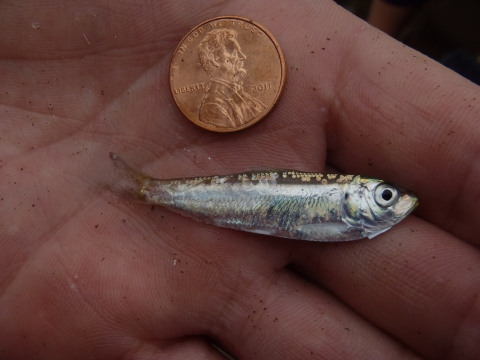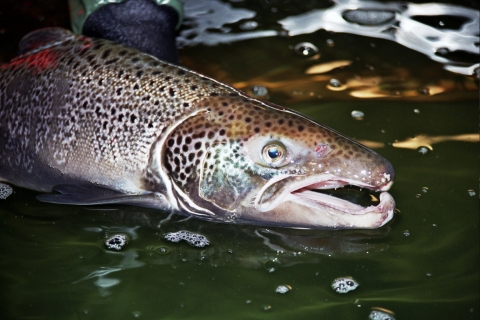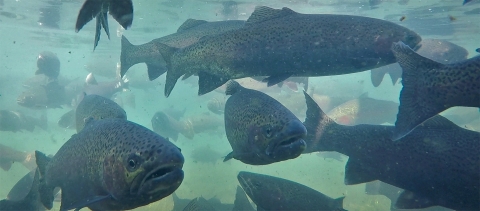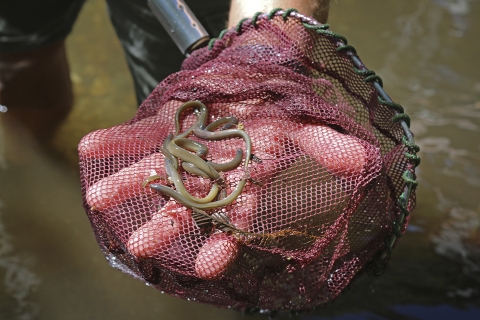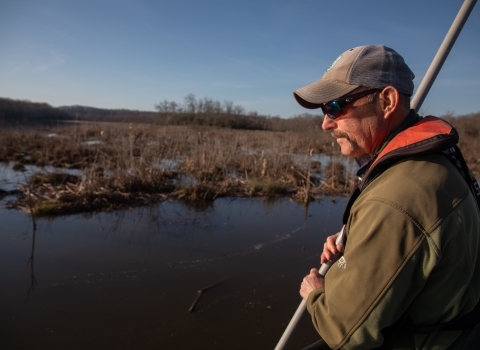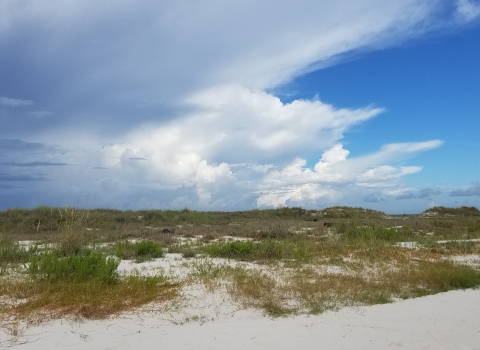Fish are on the move and not just during Ocean Month each June! Yup, fish migrate in all kinds of ways – from oceans to rivers, streams to seas, within a single watershed, or even between deep and shallow water. Some fish travel just a short distance while others may swim hundreds to thousands of miles.
North America’s rivers and waterways once supported vast annual runs of fishy friends like alewife, American eel, and steelhead. However, human-made barriers – such as dams, channels, and habitat fragmentation and alternation – made things more difficult for fish to complete their natural migration. This can result in fish declines, degraded habitats and waterways, and even extinction of fish species if they cannot freely move, breed, and survive.
Fortunately, our National Fish Passage Program works with public and private partners across America to remove barriers to fish passage fish passage
Fish passage is the ability of fish or other aquatic species to move freely throughout their life to find food, reproduce, and complete their natural migration cycles. Millions of barriers to fish passage across the country are fragmenting habitat and leading to species declines. The U.S. Fish and Wildlife Service's National Fish Passage Program is working to reconnect watersheds to benefit both wildlife and people.
Learn more about fish passage and restore healthy, sustainable aquatic habitats for fish.
Let’s follow the expeditions of five fish as they make their way along the fish highway! While fish migration looks a little different for every species (spoiler alert: there is no real fish highway), human-made barriers almost always get in the way.
Alewife or Shad
Alewife, also known as river herring, are a species of North American shad. While alewife spend most of their lives at sea, they migrate back to their home rivers in spring to spawn. To pass through freshwater rapids, they swim in short, fast bursts. However, they are unable to jump to bypass larger barriers such as dams.
Before the Maine Rivers’ Alewife Restoration Initiative, the last time an alewife reached its home lake in Maine on its own was in 1783, when the Revolutionary War had just ended. Within the last five years, we have overseen the removal or modification of all six human-made barriers on the China Lake Outlet Stream, allowing hundreds of thousands of alewife to migrate upstream!
American Eel
They might seem scary, but American eels are harmless and fascinating fish.
Did you know that American eels travel thousands of miles inland just to hang out in fresh water for 10-25 years? That’s not all. They then undertake the same journey in reverse: back to their ancestral breeding grounds at the Sargasso Sea to spawn.
While en route to the ocean, eels accomplish amazing feats of nature, such as bypassing rocky cliffs and rapids. However, some human-made barriers, such as dams, prevent eels from completing this harrowing journey. That’s why we work with our partners to create eelways. Along these eel highways, American eels can bypass the dam and continue upstream.
Atlantic Salmon
Atlantic salmon are nicknamed the “King of Fish” because of the power and grace they exhibit in completing their unique life cycle.
Salmon are anadromous, meaning that salmon spend time in both the ocean and fresh water, but migrate to spawn in fresh water. At the beginning of their lives, juvenile Atlantic salmon travel downriver to the ocean where they grow and mature until they are ready to embark on an epic journey back upriver to their birthplace where they will spawn. Unfortunately, the difficult journey is made even harder by dams and habitat degradation.
We are currently raising Atlantic salmon at hatcheries including Craig Brook and Green Lake in Maine and Nashua in New Hampshire, removing barriers to fish passage, and looking for other creative ways to help restore populations – including covering long distances overland via pickup!
Steelhead Trout
Meet the steelhead, a popular sportfish among freshwater anglers and native trout conservation initiatives alike. Steelhead are rainbow trout that spend the first part of their lives in freshwater, then migrate to the ocean when they reach adulthood. They’re also capable of spawning multiple times in their life. Each year, Coleman National Fish Hatchery in California produces about 600,000 steelhead trout for release into the wild.
Pacific Lamprey
Pacific lamprey have been around for about 400 million years, surviving several mass extinction events and outlasting dinosaurs.
Found in streams around the Pacific Rim including Alaska, Canada, Washington, Oregon, Idaho, and California, these ancient jawless fish improve water quality by filter-feeding in freshwater systems and eating microorganisms. When they are first born, Pacific lamprey are about the size of an eyelash and burrow in the stream bottom for five to seven years. Once they are about the size of a pencil, Pacific lamprey transform, developing eyes, teeth, and a sucker mouth. These fish then migrate to the ocean to feed parasitically on whales, pollock, and other fish. They grow to about two feet long before returning to fresh water to spawn.
The revival of Pacific lamprey populations in the upper Wenatchee River is crucial for supporting traditional Tribal cultural use of the fish. Learn more about recent Pacific lamprey recovery efforts in Southern California and Tribal conservation-related efforts in the greater Pacific Northwest region.
How to Help
There are many ways you can help migratory fish across America and keep America’s waterways healthy and clean for current and future generations.
Learn more about fish migration. Discover native fish and habitats in your community and their fascinating journeys.
Stop the spread of invasive species. Aquatic invasive species are a threat to native wildlife, healthy habitats, local communities, and the economy.
Visit a national wildlife refuge, national fish hatchery and other public lands. Learn more about coastal, ocean, and aquatic habitats, and fish migration by visiting to experience them for yourself! Find your nearest national wildlife refuge or national fish hatchery.
Volunteer on public lands. Discover volunteer opportunities across America, including at nearby national wildlife refuges or hatcheries. Volunteer.gov is your go-to resource for volunteer openings on federal public lands.
Buy a federal Duck Stamp. Put your stamp on conservation by purchasing a federal Duck Stamp. Ninety-eight cents of every dollar go directly into the Migratory Bird Conservation Fund to purchase or lease wetlands and wildlife habitat for inclusion in the National Wildlife Refuge System, which supports a wide variety of fish and wildlife.
Pursue a conservation career. Join our team! Explore fws.gov/careers for an overview of job opportunities, career paths and how to get started.

